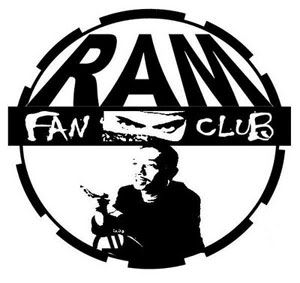To know about Hamas, why they exist and why Palestinians fight Israelis, this is the book you should read. The truth is still the truth, no matter what; just open your eyes and heart.
I feel really excited to get this book.
From publisher
The radical Islamist movement Hamas shocked the world when it won a landslide election victory in January 2006 in the Palestinian occupied territories.
One of the few journalists not to be surprised by this outcome was Zaki Chehab who has developed an international reputation as a fearless reporter and was one of the first to interview members the Iraqi resistance in May 2003. Fluent in Arabic, he is a Palestinian refugee who grew up in UN refugee camps and has unique access to and understanding of Hamas.
Like Hezbollah in neighboring
Title: Inside Hamas: The Untold Story of the Militant Islamic Movement
Author: Zaki Chehab
ISBN: 9781560259688
A Review by Michael B. Farrell
On April 6, 1994, Yehia Ayyash, one of the more elusive members of the Islamic Resistance Movement known by its Arab acronym Hamas, left an indelible mark on the Israeli-Palestinian conflict.
The man whom former Israeli Prime Minister Yitzhak Rabin called "the Engineer" dispatched a Palestinian named Raed Zakarneh on what would be a historic mission. When Mr. Zakarneh blew his car up, killing himself and eight Israelis at a bus stop in the Israeli city of
The attack was retribution for a massacre perpetrated by a Jewish settler, Baruch Goldstein, who threw a hand grenade into a crowded mosque, killing 29 Palestinians.
And so Hamas literally exploded onto the world stage. Today,
Yet neither they -- nor the rest of the world -- can afford to ignore Hamas, particularly since the group's most recent historic feat: seizing control of the Gaza Strip and routing out Fatah, the main faction of the Palestinian Liberation Organization.
So how did this marginal group, inspired by
Zaki Chehab's new book, Inside Hamas: The Untold Story of the Militant Islamic Movement, goes a long way toward answering such questions. Chehab's book not only explains the methodical rise of Hamas, but also offers insights into the group's psyche that go beyond the stereotypes perpetuated by so much of today's news coverage.
Chehab is a veteran Arab journalist who has covered the Israeli-Palestinian conflict for a quarter century and is now the
But he is more than that. Chehab is also a Palestinian who was himself born in a refugee camp, a credential that has allowed him unprecedented access to any number of high-level sources.
Through interviews with Sheikh Ahmed Ismail Hassan Yassin, the so-called "father" of Hamas, Chehab lays the groundwork for the group's evolution: "The first phase was to build institutions; charities and social committees which would open their doors to the young and old -- anyone who could play a role in resisting the occupier," explains Sheikh Yassin.
The second, he told Chehab, was to work on "strengthening the roots of the resistance within every household in the West Bank and
From there, it became possible to build a military that evolved from rock throwing to rocket launching and finally to establish a dialogue between Hamas and its Arab and Islamic neighbors.
Hamas saw success on all fronts, as Chehab explains in interviews with other key Hamas members who have managed to survive (avoiding the fate of Ayyash, the Engineer, who the author says was assassinated by Israeli intelligence) to lead it today.
But Chehab doesn't stop with an examination of the group's leadership. He moves on to probe its rank and file and offers the reader a glimpse of the poverty and anger that turn ordinary men and women into militants.
He talks to the mother of a young martyr who urged her son to take up arms at an early age. So enmeshed in her family's daily life is the fight against Israel that on their wall hangs a framed piece of barbed wire torn from a Jewish settlement.
Chehab watched as two Hamas members caught the elderly, grieving father of a suicide bomber in their arms as he collapsed from grief. Within minutes, they had persuaded him that this was not a loss but an honor. Such views, Chehab makes clear, are not the ravings of an isolated few. The Islamic Resistance Movement, he argues, is not going away, or not going quietly. It has broad and growing support among Palestinians, deep backing within the region, and impressive resilience.
Inside Hamas could hardly be more timely, although, written before the seizure of
"Attacking and isolating Hamas, as has been done," he writes, "is merely making the movement more popular."
Michael B. Farrell is the Monitor's































2 comments:
"On April 6, 1994, Yehia Ayyash, the man whom former Israeli Prime Minister Yitzhak Rabin called "the Engineer" dispatched a Palestinian ... blew his car up, .. became Hamas's first suicide bomber....And so Hamas literally exploded onto the world stage."
Okay, what about this?
"Hamas bombmaker Yahya Ayyash rigged a 1987 Opel Ascona with seven gas cylinders, five anti-personal hand grenades, and wrapped the bomb in a rucksack containing 1,100 carpenter nails. Nineteen year old Hamas operative Ra'id Zaqarna, a native of Qabatiya, was selected for the mission." And so did Hamas literally explode onto the world stage in 1987, or in a dozenz of attacks before 1987? Pathetic......
Ya Tom, it's pathetic. Only God knows
Post a Comment